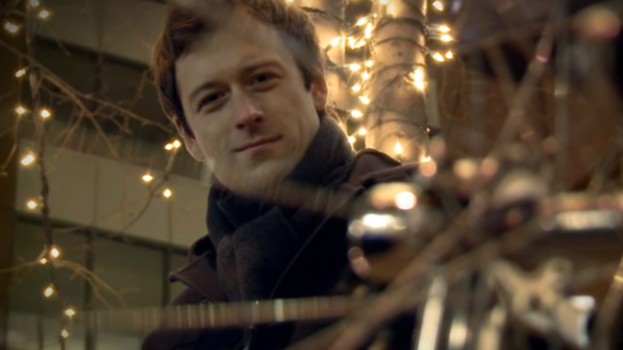The ones that stick with ya: column
After more than 10 years covering ad ideas, what strategy's outgoing digital editor Jeromy Lloyd believes stood out.

I’ve been watching ads professionally for more than a decade now – long enough to have gone through cycles of fascination and indifference several times over.
Like film, pop music or any other creative endeavour that faces the broad public, advertising moves in waves – one original idea ripples and stirs two more good ideas, which then swells into several thousand lesser copycats. Watching the wave form is pretty great. Getting soaked by what follows is not.
Occasionally, people I interview ask me what ads (or stunts or branded content or whatever) really stand out for me. Now that I’m leaving strategy and stepping away from covering marketing (for the time being), I’m hearing it a bit more frequently.
It’s hard to know what kind of “stand out” work they mean. I can recall a bunch of work that stood out because it dominated conversations with creatives for months after they launched or won at Cannes. Sony’s Bravia films and Phillips’ frozen clown robbery thing are good examples. But despite their great concepts and technical executions, those ads just kinda stayed “cool ideas” in my head. Much of that kind of work that would take the stage in Cannes just wasn’t for me. To be honest, I had to do some Googling to remember which brands were attached to those two ads I mentioned.
But there are two ads that I still think about, a lot. I can always remember what brands they’re for, can remember details from the films, and can explain to folks why I like them. I don’t necessarily think they are “the best ads ever made.” They simply connect with me. They break through.
“I See” by MoMA (2009)
My career started post-BMW Films, after The Hire made everyone perk up to talk about this fancy new thing called “branded content.” But even by the time “I See” rolled out in 2009, there weren’t that many ads you could enjoy just as a piece of writing or performance. So Taxi New York’s piece for the Museum of Modern Art (MoMA) was the first ad I really assessed as a piece of film.
Similar and subsequent work would always wring out conspicuous product placements or ham-fisted brand philosophies. But MoMA’s “I See” was just this quiet, beautiful, Tobias Wollf-like piece of writing that didn’t draw undue attention to its gimmick (a museum audio guide that starts talking directly to a bored museum-goer). Nor was there too much focus on the product (i.e. come buy a ticket to an exhibition!). It focused on me. It was about how I feel about the world, about art, about trying and failing and trying again. (Maybe that’s the privilege of marketing a museum – an experience – rather than a smartphone or a box of detergent.)
That shift from thinking about the character to thinking about myself is what every ad tries to do. This was the first (and possibly the only one) that ever did that for me. But on top of that great, quiet script and great, quiet performance, there was great, quiet production. The music was muted but evocative (written by the actor starring in the spot, Henry Wolfe). The camerawork found ways to highlight nice details while sticking to the edges of the scene, documentary-style.
There are lots of great brand films that have come along since that broke our understanding of what an ad can be. But this was the first that made me think “Huh, I didn’t know you could do that.” Kind of a shame that one of the brains behind it left the business to sell surfboards.
[iframe_youtube video=”IpMuHDJRQfc”]
Dead Island Trailer (2011)
This came out after the entertainment industry woke to the fact that the gaming side of the business had eclipsed Hollywood in a number of ways. The Grand Theft Auto series was able to report “opening weekends” that dwarfed the biggest historical film launches. While a $15 theatre ticket and a $70 videogame aren’t an apples-to-apples comparison, that kind of news signaled a shift in consumer behaviour many of us had missed.
Simultaneously, we saw game marketing ratchet up several degrees with the production of unique content like this wee film. Gears of War set the table in terms of showing a commitment to music, tone and scope. But Dead Island really showed that digital performances could hit you where it counts. The spot is probably familiar enough to us now that the reveal of who the little zombie is attacking doesn’t land with quite the impact it did in 2011. But, at the time, most of us nodded appreciatively as we cottoned on to the story being revealed by the artful editing.
There are those who felt the trailer made for a better experience than the game itself, but that’s fine by me. How many movies have been oversold by their trailers? This video built a ton of anticipation for a brand new franchise that would go on to sell more than five million copies. I think most of those people just wanted to know if we could save this girl.
[iframe_youtube video=”ialZcLaI17Y”]















Leave a Reply